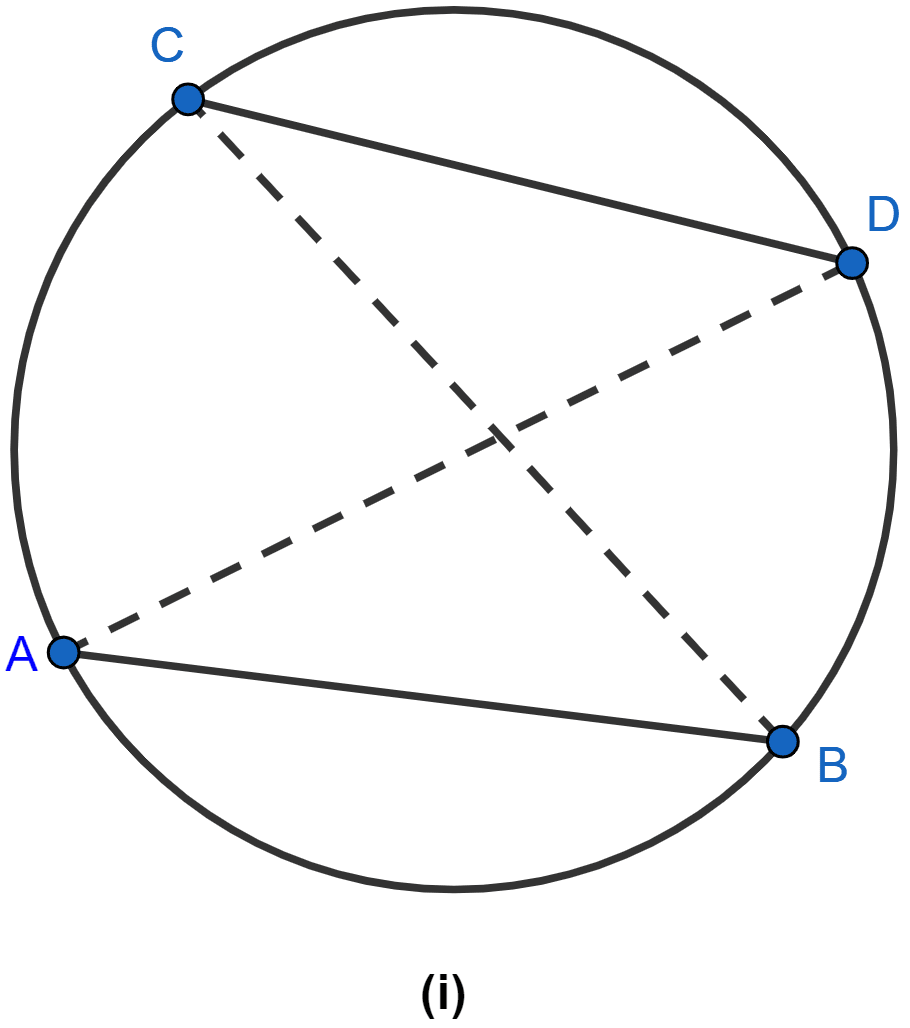Mathematics
In the figure (ii) given below, ABC is an isosceles triangle with AB = AC. If ∠ABC = 50°, find ∠BDC and ∠BEC.

Circles
7 Likes
Answer
Since, AB = AC.
Hence, in △ABC,
∠ACB = ∠ABC = 50°.
Since sum of angles in a triangle = 180°.
In △ABC,
⇒ ∠ABC + ∠ACB + ∠BAC = 180°
⇒ 50° + 50° + ∠BAC = 180°
⇒ ∠BAC + 100° = 180°
⇒ ∠BAC = 180° - 100° = 80°.
From figure,
∠BDC = ∠BAC = 80° (∵ angles in same segment are equal.)
In cyclic quadrilateral sum of opposite angles = 180°,
Hence in BDCE,
⇒ ∠BDC + ∠BEC = 180°
⇒ 80° + ∠BEC = 180°
⇒ ∠BEC = 180° - 80° = 100°.
Hence, the value of ∠BDC = 80° and ∠BEC = 100°.
Answered By
2 Likes
Related Questions
In the figure (ii) given below, sides AB and DC of a cyclic quadrilateral are produced to meet at a point P and the sides AD and BC produced to meet at a point Q. If ∠ADC = 75° and ∠BPC = 50°, find ∠BAD and ∠CQD.

In the figure (i) given below, ABDC is a cyclic quadrilateral. If AB = CD, prove that AD = BC.

A point P is 13 cm from the centre of a circle. The length of the tangent drawn from P to the circle is 12 cm. Find the distance of P from the nearest point of the circle.
Two circles touch each other internally. Prove that the tangents drawn to the two circles from any point on the common tangent are equal in length.